Bonin’s Long-Hidden Hand Written Jailhouse
Diaries & Murder Confession Stories
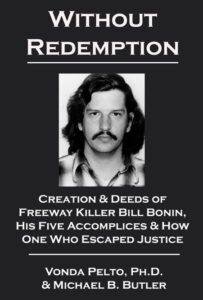 A key aspect in writing Without Redemption was that the authors had to access photocopies of Freeway Killer Bill Bonin’s jailhouse diaries and murder confession stories. Hidden for over 40 years, and never used in any book, movie or documentary, they were hand written on legal pads during about six months months after his final arrest, in June 1980, and before his November-December 1981 trial.
A key aspect in writing Without Redemption was that the authors had to access photocopies of Freeway Killer Bill Bonin’s jailhouse diaries and murder confession stories. Hidden for over 40 years, and never used in any book, movie or documentary, they were hand written on legal pads during about six months months after his final arrest, in June 1980, and before his November-December 1981 trial.
In fact, what makes the diaries so interesting is they cover the months when the cases against Bonin, and his accomplices, were being hammered out as detectives scrambled to find more suspects, evidence and witnesses. While the public starts to learn more and more about Bonin’s heinous crimes, and how the victims were treated, the reader is accorded an inside view of everything swirling around this infamous serial killer.
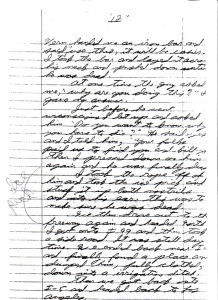 He reveals more of his inner feelings, and the true nature of his crimes, in much more writing than in speaking during interviews with detectives and co-author Clinical Psycholigist Vonda Pelto. Following the jailhouse suicide of Bonin accomplice Vernon Butts, in January 1981, Pelto was brought in by the LA County Sheriff’s Dept. to prevent any other high profile inmates from avoiding a trial and final sentencing. Her job was not to counsel the inmates, but rather provide an emotional sounding board and monitor their mental/emotional health.
He reveals more of his inner feelings, and the true nature of his crimes, in much more writing than in speaking during interviews with detectives and co-author Clinical Psycholigist Vonda Pelto. Following the jailhouse suicide of Bonin accomplice Vernon Butts, in January 1981, Pelto was brought in by the LA County Sheriff’s Dept. to prevent any other high profile inmates from avoiding a trial and final sentencing. Her job was not to counsel the inmates, but rather provide an emotional sounding board and monitor their mental/emotional health.
Segments from the diaries appear throughout the book. For example, many of the murder stories come from the Bonin diaries and many details are revealed for the first time. During the trial, two accomplices testifed about three of the murders and the rest were, for the most part, left to the imagination. Even during the famous December 1980 Bonin-Detective Confession Interviews, Bonin left out many heinous details that were included in the written confession murder stories.
Other sections concentrate on life in the High Power section of LA Men’s Central Jail. Diary entries from around Christmas 1980 show Bonin looking back on his life, anaylzing how it all went wrong with a myriad of regrets, excuses and explanations. But there is also humor as he describes arguments amongst inmates and even guards, fires being set on the row, how newspapers and candy was distributed, shower schedules, food and more. Paramount is the inmates ability to strong, not letting the hopelessness get the best of you.
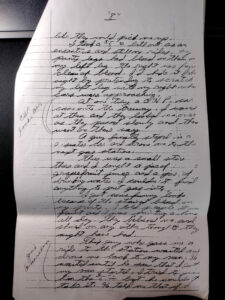
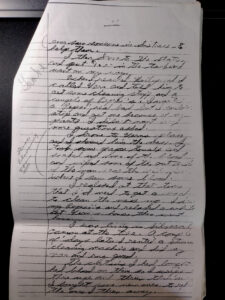 Right: Successive pages from Bonin’s hand written stories of his murder of Markus Grabs, committed on August 5, 1979 and the second of 22 killings.
Right: Successive pages from Bonin’s hand written stories of his murder of Markus Grabs, committed on August 5, 1979 and the second of 22 killings.
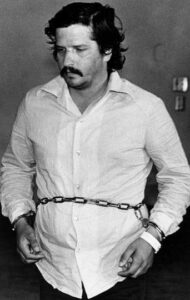 Below Bonin writes about fellow inmate Lawrence Bittaker, on trial for murdering five young girls. They committed their crimes around the same time and their modes of operation were similar, which is pointed out in Without Redemption:
Below Bonin writes about fellow inmate Lawrence Bittaker, on trial for murdering five young girls. They committed their crimes around the same time and their modes of operation were similar, which is pointed out in Without Redemption:
“The person I talked with the most was Lawrence Sigmund Bittaker, I called him Larry and sometimes Sigmund. I found out he hated his middle name so I stopped. I even told him about everything eventually. I knew Larry from CMC East (state prison). Even though we only talked just a little there. When Larry ran out of money I loaned him some until he got himself together. I wasn’t worried if he could or couldn’t pay me back even. Though I knew he could. To me it was someone to help out. Yet Larry is like me. He’d rather give than receive. It was hard for him as it is for me. To receive without paying back. I didn’t want to be in debt or owe anyone else.
“Bittaker and me would talk a lot about stocks. I even got him interested in the stock market. It was something to keep our minds off the reality of being in here. You have to keep your mind and mental thoughts on the outside even though your physical being is locked up.
“If you didn’t it would get to you. A few months ago, Larry was going to commit suicide on his 40th birthday, September 17. Thru talking to him and showing him some hope and that there was still hope he changed his mind. Later he saw that there was some hope as things started looking a little more promising in his case. At least for passing up the death penalty.”
This segment is from Christmas Eve 1980 and shows Bonin reflecting on life:
“Christmas Eve, Wednesday, December 24, 1980: Thanksgiving dinner was pretty good. We should have a pretty good Christmas Day Dinner and New Year’s Day Dinner also. X-Mas time is the time of the year the hardest to do time. You feel your being locked up more as it is more noticeable to you. It is a lonely time of year and the hurt just hurts more during the time span from Thanksgiving until after New Year’s Day is passed. My brother Paul’s girl had a baby girl, 7-pounds. They named her Autumn. I don’t know what last name she got. She was born on Nov. 15, 1980. My brother Paul turned 31 on Nov. 23, 1980.
“It is X-Mas eve and the lights are out. The night shift left the radio on for us. All the music is Christmas music. It helps, yet it hurts. I love music, especially Church Hymns and Christmas music. This is the time on X-Mas eve when I reflect on my life. I don’t like what I see. I can only try to control what happens in the present and future. The time for a change is long past and so I must make a change. The hate, the anger, the frustration and all the hurt must be left behind. Only good and love can go forward from this night forward. I shall try to live up to this promise I have just made to myself. Well it’s 10:30 p.m. and they cut of the radio. So much for music on this X-mas eve.”
 A key aspect in writing Without Redemption was that the authors had to access photocopies of Freeway Killer Bill Bonin’s jailhouse diaries and murder confession stories. Hidden for over 40 years, and never used in any book, movie or documentary, they were hand written on legal pads during about six months months after his final arrest, in June 1980, and before his November-December 1981 trial.
A key aspect in writing Without Redemption was that the authors had to access photocopies of Freeway Killer Bill Bonin’s jailhouse diaries and murder confession stories. Hidden for over 40 years, and never used in any book, movie or documentary, they were hand written on legal pads during about six months months after his final arrest, in June 1980, and before his November-December 1981 trial. He reveals more of his inner feelings, and the true nature of his crimes, in much more writing than in speaking during interviews with detectives and co-author Clinical Psycholigist Vonda Pelto. Following the jailhouse suicide of Bonin accomplice Vernon Butts, in January 1981, Pelto was brought in by the LA County Sheriff’s Dept. to prevent any other high profile inmates from avoiding a trial and final sentencing. Her job was not to counsel the inmates, but rather provide an emotional sounding board and monitor their mental/emotional health.
He reveals more of his inner feelings, and the true nature of his crimes, in much more writing than in speaking during interviews with detectives and co-author Clinical Psycholigist Vonda Pelto. Following the jailhouse suicide of Bonin accomplice Vernon Butts, in January 1981, Pelto was brought in by the LA County Sheriff’s Dept. to prevent any other high profile inmates from avoiding a trial and final sentencing. Her job was not to counsel the inmates, but rather provide an emotional sounding board and monitor their mental/emotional health.
 Right: Successive pages from Bonin’s hand written stories of his murder of Markus Grabs, committed on August 5, 1979 and the second of 22 killings.
Right: Successive pages from Bonin’s hand written stories of his murder of Markus Grabs, committed on August 5, 1979 and the second of 22 killings. Below Bonin writes about fellow inmate Lawrence Bittaker, on trial for murdering five young girls. They committed their crimes around the same time and their modes of operation were similar, which is pointed out in Without Redemption:
Below Bonin writes about fellow inmate Lawrence Bittaker, on trial for murdering five young girls. They committed their crimes around the same time and their modes of operation were similar, which is pointed out in Without Redemption: